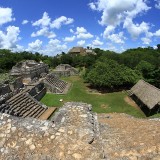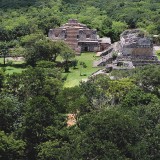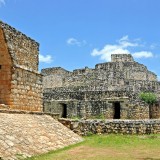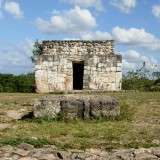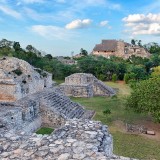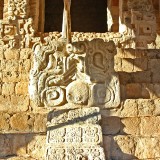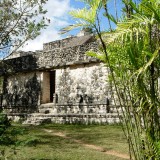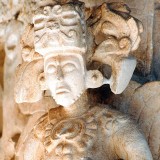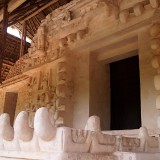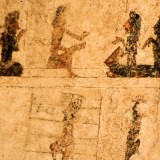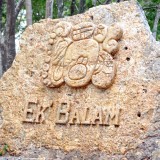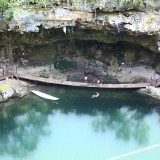loading
Southern Plaza
| The smaller structures include temples and platforms, such as Platform 14 or “Stelae Platform”. The larger ones include Structure 16 or Oval Palace, that has an unusual elliptic shape in the back part; the Twins or Structure 17, with two identical top structures. Number 10 is a large basement with a small temple, possibly for ceremonial uses, whereas Structure 18 or arch has two vaulted hallways that show the former entrance to the site. |
The Tomb
| In the tomb of Ukit Kan Lek Tok, one of Ek´ Balam´s rulers, his mortal remains were found as well as offerings. The tomb boasts the Monster of the Earth, on the top the king on his throne, and on both sides rooms with wall paintings. The facade of the tomb boasts some huge jaws. This is the way the Maya cosmogony represents the entrance to the underworld. |
Ball Court
| It is located between the two plazas. Several valuable offerings have been discovered among its structures, such as a 90-vessels offering. |
The Arch
| Mayan arch at the entrance of the archaeological site. |
The Acropolis
| The second largest ever built by the Maya in the Yucatan Peninsula, it has 40 rooms, it is 160 meters long, 60 wide ad 31 high and the view from the top is spectacular. It boasts extremely well conserved stucco representing mythical characters, rulers, warriors and fine geometric patterns. The Acropolis shows several construction stages atop earlier buildings, with rooms on several levels, communicated by a complex system of hallways and stairways. |
Explorers
| The site was first mentioned in 1886 by archaeologist Désiré Charnay (right) but investigation on the site didn´t start before 1984. |
Introduction Ek Balam
It was founded in the late pre-classic and occupied until 1000 A.D. The central area we visit is where the elite used to live, it covers 1 sq. km of a total of 12 and is protected by two walls with 5 entrances, where the sacbes (white paths) converge. Ek Balam in Yucatec Maya language, Ek Balam means “jaguar star” or “black jaguar”. The site bears the name of a ruler.
This text will be overwritten by jQuery
